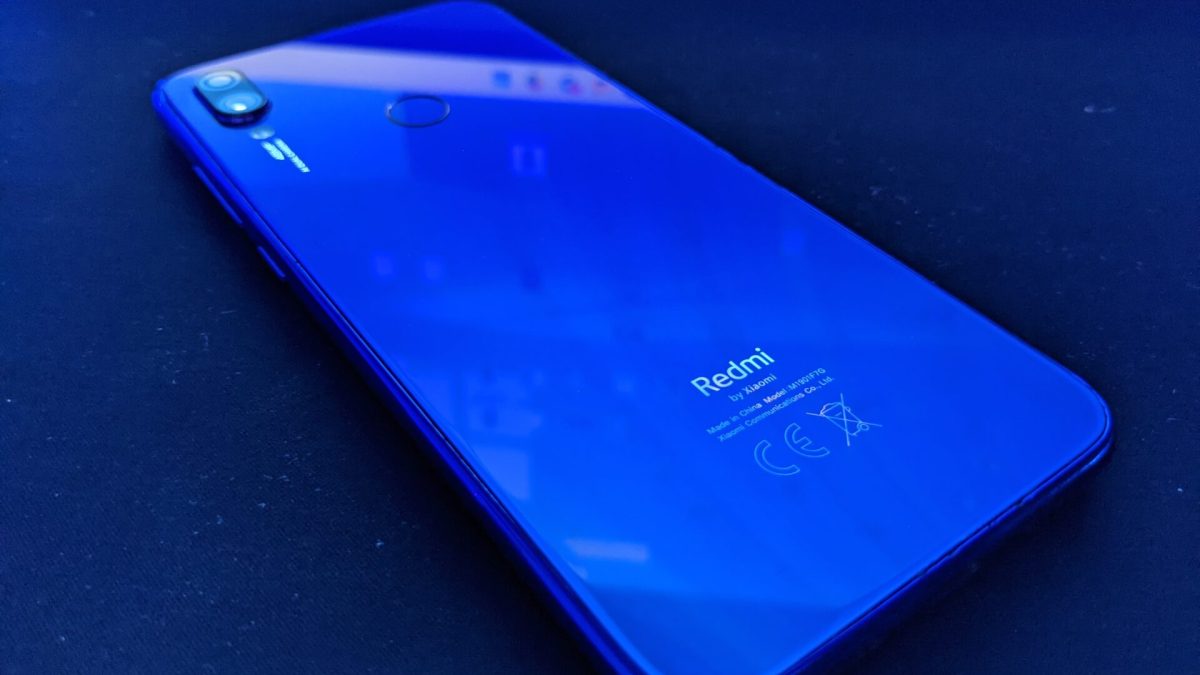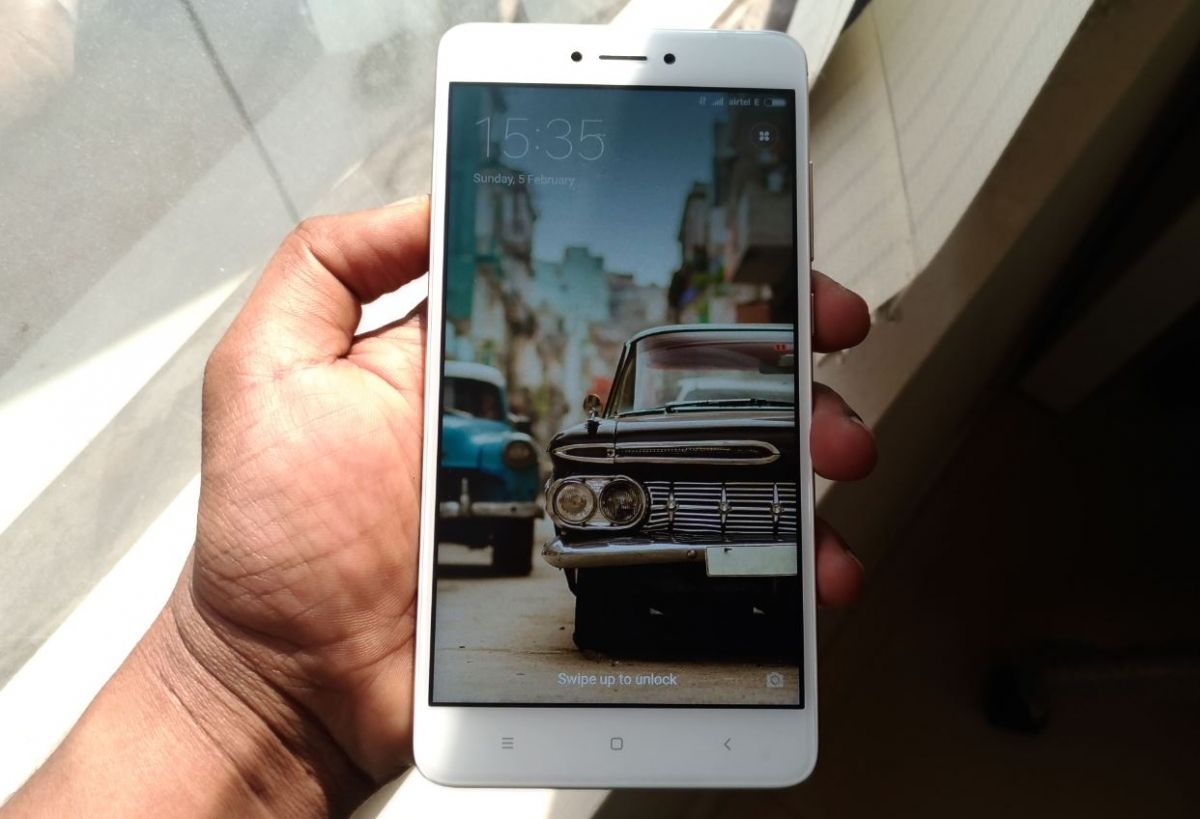Introduction
Welcome to the world of mobile device customization! If you're the proud owner of a Redmi Note 10, you're already familiar with its impressive features and capabilities. However, have you ever wondered about the untapped potential that lies within your device? Rooting your Redmi Note 10 can unlock a whole new realm of possibilities, allowing you to take full control of your device and customize it to suit your unique preferences.
In this comprehensive guide, we will delve into the concept of rooting and its implications for your Redmi Note 10. Whether you're a tech enthusiast looking to push the boundaries of your device's performance or a casual user seeking to explore new features, this guide will equip you with the knowledge and tools to embark on this exciting journey.
By the end of this article, you will have a clear understanding of what rooting entails, the benefits it offers, and the precautions to consider before taking the plunge. Additionally, we will provide you with a step-by-step rooting guide tailored specifically for the Redmi Note 10, ensuring that you can navigate the process with confidence and ease.
So, if you're ready to unleash the full potential of your Redmi Note 10 and embark on a transformative mobile experience, let's dive into the world of rooting and discover the endless possibilities that await you.
What is Rooting?
Rooting is the process of gaining privileged control over a device's operating system, allowing users to access and modify system files and settings that are typically restricted. In the context of Android devices such as the Redmi Note 10, rooting grants users elevated permissions, akin to administrative privileges on a computer, enabling them to make profound customizations and optimizations.
By rooting your Redmi Note 10, you can transcend the limitations imposed by the manufacturer and carrier, unlocking the full potential of your device. This newfound freedom empowers you to install specialized apps, customize the user interface, optimize performance, and even enhance battery life. Moreover, rooting enables you to remove pre-installed bloatware, which can significantly free up storage space and streamline the device's functionality.
One of the most compelling aspects of rooting is the ability to install custom ROMs. These customized versions of the Android operating system offer a plethora of features and optimizations that may not be available in the stock firmware. Custom ROMs can breathe new life into your Redmi Note 10, providing a tailored user experience and access to the latest Android updates, even if official support has ceased.
Furthermore, rooting facilitates the utilization of powerful root-only apps that leverage the elevated permissions to deliver advanced functionality. These apps can range from comprehensive backup solutions to system-level performance tweaks, offering a level of control and customization that is simply unattainable on unrooted devices.
It's important to note that while rooting offers unparalleled freedom and customization, it also comes with inherent risks and potential drawbacks. As we explore the advantages and disadvantages of rooting in the subsequent sections, you'll gain a comprehensive understanding of the implications and considerations associated with this transformative process.
Advantages of Rooting Your Redmi Note 10
Rooting your Redmi Note 10 unlocks a myriad of advantages that can elevate your mobile experience to new heights. Here are the compelling benefits that await you:
1. Enhanced Customization:
Rooting empowers you to personalize every aspect of your Redmi Note 10, from the user interface to system-level settings. With elevated permissions, you can install custom themes, tweak animations, and fine-tune the device's appearance to reflect your unique style. Additionally, you can utilize powerful customization tools to tailor the user experience according to your preferences, creating a truly personalized and immersive interface.
2. Improved Performance:
By gaining root access, you can optimize the performance of your Redmi Note 10 in ways that are simply unattainable on unrooted devices. From overclocking the CPU for enhanced processing power to implementing advanced memory management techniques, rooting allows you to unleash the full potential of your device's hardware. This can result in smoother multitasking, faster app loading times, and an overall snappier user experience.
3. Access to Exclusive Apps and Features:
Rooting opens the door to a vast array of root-only apps and features that are designed to leverage the elevated permissions granted by root access. These apps range from comprehensive backup solutions to system-level performance tweaks, offering a level of control and functionality that is unparalleled on unrooted devices. Furthermore, you can install powerful automation tools and system utilities that streamline everyday tasks and enhance productivity.
4. Removal of Bloatware:
Manufacturers often pre-install unnecessary apps, commonly referred to as bloatware, which consume valuable storage space and system resources. Rooting your Redmi Note 10 enables you to remove bloatware, freeing up storage space and improving system performance. This streamlined approach not only declutters your device but also enhances its responsiveness and efficiency.
5. Installation of Custom ROMs:
One of the most compelling advantages of rooting is the ability to install custom ROMs, which offer a wealth of features and optimizations that may not be available in the stock firmware. Custom ROMs can breathe new life into your Redmi Note 10, providing access to the latest Android updates, enhanced security features, and a tailored user experience. Moreover, custom ROMs often deliver improved battery life and performance enhancements, allowing you to maximize the potential of your device.
6. Extended Battery Life:
Rooting grants you the ability to implement advanced battery-saving techniques and optimizations that can extend the battery life of your Redmi Note 10. With root access, you can fine-tune system settings, control background processes, and implement power-saving tweaks that mitigate battery drain and prolong usage between charges.
In summary, rooting your Redmi Note 10 presents a wealth of advantages that cater to both enthusiasts and casual users alike. From unparalleled customization to enhanced performance and access to exclusive features, the benefits of rooting can transform your mobile experience and unlock the full potential of your device.
Precautions Before Rooting Your Device
Before embarking on the journey of rooting your Redmi Note 10, it is crucial to consider a series of precautions to ensure a smooth and informed rooting process. While rooting offers a plethora of benefits, it also introduces potential risks and implications that warrant careful consideration. By adhering to these precautions, you can mitigate potential pitfalls and approach the rooting process with confidence and preparedness.
1. Understand the Implications:
Rooting your device fundamentally alters its operating system and security parameters. It is essential to comprehend that rooting voids the manufacturer's warranty and may impact the device's eligibility for future software updates. Additionally, certain apps and services, such as banking and digital rights management (DRM) platforms, may cease to function on rooted devices. Therefore, it is imperative to weigh the benefits against these implications and make an informed decision.
2. Research Compatibility and Methods:
Before proceeding with rooting, thoroughly research the compatibility of rooting methods and tools with your specific device model and firmware version. Different iterations of the Redmi Note 10 may require distinct rooting approaches, and utilizing incompatible methods can result in device instability or even permanent damage. Ensure that the rooting tools and resources are reputable and well-suited for your device to minimize the risk of adverse outcomes.
3. Backup Essential Data:
Prior to initiating the rooting process, create comprehensive backups of your essential data, including contacts, photos, videos, and documents. While rooting itself does not inherently erase data, unforeseen complications or errors during the process can lead to data loss. By safeguarding your data through backups, you can mitigate the impact of potential complications and restore your device to its previous state if necessary.
4. Consider Unlocking Bootloader:
In many cases, rooting necessitates unlocking the device's bootloader, a process that can irreversibly erase all data on the device. Before proceeding, carefully evaluate the implications of unlocking the bootloader and ensure that you have backed up all critical data. Additionally, familiarize yourself with the manufacturer's policies regarding bootloader unlocking, as certain actions may void the warranty or limit future support.
5. Verify Reputable Sources and Guides:
When seeking rooting guides and resources, prioritize reputable and trusted sources to ensure accurate and reliable information. Verify the credibility of the guides, tools, and community forums to minimize the risk of encountering outdated or erroneous instructions. Additionally, seek guidance from experienced users or communities to gain insights into best practices and potential pitfalls.
By conscientiously addressing these precautions, you can approach the rooting process with a comprehensive understanding of its implications and requirements. While the allure of enhanced customization and performance beckons, a cautious and informed approach is paramount to safeguarding the integrity and functionality of your Redmi Note 10.
Step-by-Step Rooting Guide for Redmi Note 10
Rooting your Redmi Note 10 requires a methodical approach to ensure a successful outcome. Before initiating the rooting process, it is crucial to understand that rooting may void the device's warranty and can potentially lead to unintended consequences. With this in mind, let's delve into the step-by-step rooting guide tailored specifically for the Redmi Note 10.
1. Enable Developer Options:
- Navigate to the "Settings" app on your Redmi Note 10.
- Scroll down and tap on "About phone."
- Locate the "Build number" and tap on it seven times to enable Developer Options.
2. Enable OEM Unlocking and USB Debugging:
- In the "Settings" menu, access "Developer options."
- Enable "OEM unlocking" and "USB debugging" to allow the device to communicate with the computer during the rooting process.
3. Backup Essential Data:
- Before proceeding with rooting, create a comprehensive backup of your essential data, including contacts, photos, videos, and documents. This ensures that your data is safeguarded in the event of unforeseen complications during the rooting process.
4. Install ADB and Fastboot Drivers:
- Download and install the Android Debug Bridge (ADB) and Fastboot drivers on your computer. These tools are essential for communicating with your Redmi Note 10 during the rooting process.
5. Download Rooting Tools:
- Obtain the necessary rooting tools and resources tailored for the Redmi Note 10. It is crucial to verify the compatibility of the rooting tools with your specific device model and firmware version to ensure a seamless rooting experience.
6. Unlock the Bootloader:
- Follow the manufacturer's guidelines to unlock the bootloader of your Redmi Note 10. This process may involve erasing all data on the device, so ensure that you have backed up essential data beforehand.
7. Initiate the Rooting Process:
- Connect your Redmi Note 10 to the computer using a USB cable.
- Launch the rooting tool and follow the on-screen instructions to initiate the rooting process. This typically involves running commands through ADB to grant root access to the device.
8. Verify Root Access:
- Once the rooting process is complete, verify the root access on your Redmi Note 10 using a root checker app from the Google Play Store. This app confirms whether the rooting process was successful and the device now has root privileges.
By meticulously following these steps, you can navigate the rooting process for your Redmi Note 10 with confidence and precision. It is essential to exercise caution and thoroughness at each stage to mitigate potential risks and ensure a seamless rooting experience.
Popular Rooting Apps for Redmi Note 10
When it comes to rooting your Redmi Note 10, having the right tools at your disposal is essential for a seamless and successful rooting experience. Several popular rooting apps have garnered acclaim within the Android community for their reliability and effectiveness in granting root access to devices. Here are some of the most widely used rooting apps that are well-suited for the Redmi Note 10:
1. Magisk:
Magisk has established itself as a leading rooting solution, renowned for its versatility and robust feature set. Unlike traditional rooting methods that modify the system partition, Magisk operates on a systemless basis, allowing for seamless integration with the device's firmware. This systemless approach enables Magisk to bypass integrity checks and SafetyNet, ensuring that rooted devices can still access apps and services that typically restrict access to rooted devices. Additionally, Magisk offers a comprehensive module system, enabling users to install and manage a diverse range of modifications and enhancements.
2. SuperSU:
SuperSU has long been a staple in the rooting community, offering a straightforward and user-friendly interface for managing root permissions and access. Developed by renowned developer Chainfire, SuperSU provides granular control over app permissions, allowing users to grant or deny root access on a per-app basis. This level of control is invaluable for maintaining the security and integrity of the rooted device while empowering users to leverage root privileges where necessary. SuperSU's reputation for stability and compatibility makes it a compelling choice for Redmi Note 10 users seeking a reliable rooting solution.
3. KingoRoot:
KingoRoot has garnered attention for its simplicity and accessibility, catering to users who are new to the concept of rooting. This app offers a one-click rooting solution, streamlining the rooting process and minimizing the technical complexities typically associated with rooting. KingoRoot's intuitive interface and automated approach make it an appealing option for users who prioritize convenience and ease of use. While KingoRoot may not offer the same level of customization and advanced features as other rooting apps, its accessibility and user-friendly nature make it a viable choice for individuals seeking a straightforward rooting experience.
4. Framaroot:
Framaroot distinguishes itself with its emphasis on simplicity and efficiency, providing a streamlined rooting process that appeals to users seeking a hassle-free solution. This app employs a user-friendly interface and a selection of exploit-based rooting methods, enabling users to root their devices with minimal manual intervention. Framaroot's compatibility with a wide range of device models, including the Redmi Note 10, positions it as a versatile and accessible rooting app for users who prioritize a straightforward and expedient rooting experience.
By leveraging these popular rooting apps, Redmi Note 10 users can embark on the rooting process with confidence, knowing that they have access to reliable and effective tools that cater to a diverse range of preferences and technical proficiencies. Each of these apps offers unique features and approaches to rooting, ensuring that users can select the solution that aligns with their specific needs and preferences.
Risks and Disadvantages of Rooting
While the prospect of unlocking the full potential of your Redmi Note 10 through rooting is undeniably enticing, it is essential to acknowledge the inherent risks and potential drawbacks associated with this transformative process. By gaining a comprehensive understanding of the risks and disadvantages of rooting, you can make an informed decision that aligns with your priorities and considerations.
1. Voided Warranty:
Rooting your Redmi Note 10 typically voids the manufacturer's warranty, as it involves modifying the device's operating system beyond the scope of official configurations. This means that in the event of hardware or software issues, you may no longer be eligible for warranty support or device replacements from the manufacturer. It is crucial to weigh the allure of rooting against the potential loss of warranty coverage and consider the long-term implications for device maintenance and support.
2. Security Vulnerabilities:
Rooting exposes your device to potential security vulnerabilities, as it circumvents the built-in security mechanisms designed to protect the device from malicious software and unauthorized access. By granting elevated permissions to apps and system modifications, rooted devices may become more susceptible to security breaches and unauthorized access to sensitive data. It is imperative to exercise caution when installing third-party apps and modifications on rooted devices to mitigate the risk of security compromises.
3. Software Instability:
Rooting can introduce software instability and compatibility issues, particularly when installing custom ROMs or system modifications. While custom ROMs offer enhanced features and optimizations, they may not undergo the same rigorous testing and validation as official firmware releases. This can lead to unforeseen bugs, performance issues, and incompatibilities with certain apps and services. Users should be prepared to troubleshoot potential software instabilities and invest time in finding stable and compatible modifications for their rooted devices.
4. Update Limitations:
Rooted devices may encounter limitations when receiving official software updates from the device manufacturer. Manufacturers often implement safeguards to prevent rooted devices from receiving over-the-air (OTA) updates, as these updates may conflict with the modifications made to the device's system. This can result in delayed access to critical security patches, feature enhancements, and the latest Android updates. Users should be prepared to manually update their rooted devices using custom ROMs or alternative methods to stay current with the latest software releases.
5. Bricking Risk:
The process of rooting, particularly when unlocking the bootloader and flashing custom firmware, carries a risk of bricking the device. "Bricking" refers to rendering the device inoperable, akin to turning it into a "brick." This can occur due to errors during the rooting process, incompatible modifications, or unforeseen complications. While the risk of bricking can be mitigated through careful research and adherence to best practices, users should be aware of this potential outcome and proceed with caution.
In summary, while rooting offers unparalleled customization and performance enhancements, it also introduces a spectrum of risks and disadvantages that warrant careful consideration. By weighing the benefits against these implications, users can make an informed decision regarding the suitability of rooting for their Redmi Note 10. It is essential to approach rooting with a thorough understanding of its potential drawbacks and to prioritize device security and stability throughout the rooting process.
Conclusion
In conclusion, the decision to root your Redmi Note 10 represents a pivotal choice that carries both transformative potential and inherent implications. Throughout this guide, we have explored the concept of rooting, its advantages, precautions, step-by-step rooting guide, popular rooting apps, and the risks and disadvantages associated with this process. As you contemplate the prospect of rooting your device, it is essential to approach this decision with a balanced perspective that considers both the benefits and potential drawbacks.
Rooting your Redmi Note 10 presents an opportunity to unlock a realm of customization, performance enhancements, and access to exclusive features that can elevate your mobile experience to new heights. From personalized user interfaces to improved battery life and the installation of custom ROMs, the advantages of rooting are undeniably compelling. By gaining root access, you can tailor your device to align with your unique preferences and explore a level of control and customization that is simply unattainable on unrooted devices.
However, it is crucial to acknowledge the risks and implications that accompany the rooting process. From voided warranties and security vulnerabilities to potential software instabilities and update limitations, rooting introduces a spectrum of considerations that warrant careful evaluation. By understanding these implications and exercising caution throughout the rooting process, users can navigate this transformative journey with informed decision-making and preparedness.
Ultimately, the decision to root your Redmi Note 10 hinges on a thorough assessment of your priorities, technical comfort level, and long-term considerations. Whether you are driven by a passion for customization and performance optimization or seek to explore new possibilities for your device, rooting represents a pathway to a truly personalized and empowered mobile experience.
As you weigh the benefits and implications of rooting, it is essential to prioritize thorough research, adherence to best practices, and a conscientious approach to safeguarding the integrity and functionality of your device. By doing so, you can embark on the rooting process with confidence and preparedness, ensuring that the transformative potential of rooting is realized while mitigating potential drawbacks.
In the end, the decision to root your Redmi Note 10 is a deeply personal choice that reflects your aspirations for device customization and performance optimization. By leveraging the insights and guidance presented in this guide, you are equipped to make an informed decision that aligns with your unique preferences and priorities, setting the stage for a transformative and empowered mobile experience.

























